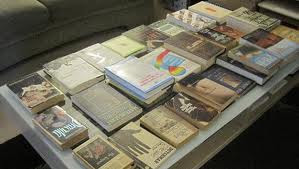My Kiwi friend Peter Anderson is a travel writer and he shares the many wonderful places he has been to in his blog, Peter's Adventures. He is also a professional photographer, so you can expect to see some fantastic shots. To Peter, it's all about being "a traveller, not a tourist"; his journeys have taken him off the beaten path to the Khyber Pass, Piran in Slovenia and Lake Banani in Bangladesh, amongst others just as exotic. With much encouragement of those around him, he compiled his stories into a book Cons, Fools and Friends - 25 Years of Travelling the World, which was launched at an intimate gathering of family and friends on 29 September 2009.
In his introduction to the book, Peter tells us what travelling means to him: "... the more I travel, the more I want to photograph my feelings of the places and sights I am journeying through. Also, I want to write stories rather than articles... Now, when I travel, I tend to ponder more. I don't want to rush off to the next town; I want to become a native of the area I am visiting, even if it is only for that brief period. Travelling is for the involvement and engagement of oneself with the local ambience and nuances of life, within the culture, the cuisine and most of all, the people."
The stories he relates take us around the globe, encompassing some of the 75 countries he had visited in Europe, Asia, America, Africa and Oceania. I do wish he could have included some of his fabulous photographs (in colour, of course) but the format of the book didn't allow it.
With Cathie Muker, one of my Kiwi friends, at the launch of Peter's book.
This is not the only travel book by Peter on my shelf. So very many years ago, in 1994, he had come out with a book Discover Malaysia, written jointly with his Malaysian wife, Farida Shah. They had driven the length and breadth of this country, not just on highways and main roads, but also along tracks that took them to some interesting spots. These routes are explored in detail in their user-friendly travel guide, complete with directions to follow, sights to see, food to eat and places to stay.
The front and back of the travel guide.
It was during that time, in the late 1990s when I had just chucked my corporate job, that the idea of travel writing came to me. A believer in being prepared, I even bought a how-to book, Travel Writing - A Guide to Research, Writing and Selling, by L Peat O' Neil. This practical book succeeded in setting me straight on a number of things. One of them is that a travel writer should carry only a sports duffel bag and a suitcase, both small enough to fit in the overhead luggage rack or under the airplane seat. "Real travel freedom," O' Neil says, "is never waiting at the baggage carousel." With such a restriction, this means packing smart, bringing only the necessities and no souvenir-buying!
The life of a travel writer may be exciting but it's certainly not glamourous. O' Neil tells the wannabe to "dash your illusions of a pampered lifestyle in luxury hotels and the first-class section... The average travel writer preparing a story for a regional travel magazine drives to a motel, tours the destination and snaps pictures, all the while asking questions and writing down information." She echoes Peter as she advises, "Fully participating in your immediate environment will open a whole new spectrum of experiences."
There are exercises at the end of every chapter. In one of these exercises, she asks to list a dozen creature comforts that the reader considers important, e.g. daily hot showers, regular meals, air-conditioning, freshly brewed coffee. "Think about how deeply you would be troubled if you had to forgo any of these habits or comforts," she warns.
I listed, I thought and I realised that I haven't got what it takes, especially bearing in mind that I get really stressed when I take a wrong turn. Ask my husband; he's learnt never to have me along when he decides to check out a new place!
Source: msnbc.msn.com





























































